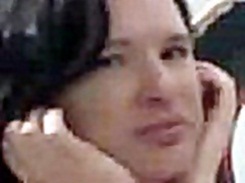Jesus Christ taught and practiced nonviolent resistance, despite popular teachings to the contrary. In a time of oppression as Jesus and fellow Jews experienced, nonviolent resistance takes on a heightened importance, and peacemaking becomes more than an art.
While speaking to a hillside crowd Jesus proclaimed, “Blessed are the peacemakers, for they will be called children of God.” The speech Jesus gave came to be called the “Sermon on the Mount.” Going beyond mere appeals to his listeners to live in peace, he told them to go out and make peace. Much of his audience were not expecting a Messiah who extolled the virtues of peacemaking, but one who led the Jewish people in violent and triumphant revolt against their Roman occupiers.
Later in the Sermon on the Mount Jesus laid out three ways his audience could nonviolently resist both their Roman occupiers and the Jewish religious leaders. The phrase “turn the other cheek” is famous, but almost always taken out of its cultural context. Jesus said, “But if anyone strikes you on the right cheek, turn the other also.” In ancient Jewish culture the left hand was considered unclean, therefore it was used to perform “unclean tasks,” such as cleaning one’s self. There was such a strong taboo against using the left hand for “clean tasks” that at a religious community in Qumran during Jesus’ time gesturing with the left hand would have “meant exclusion and penance for ten days.”[i]
Note that Jesus mentioned the right cheek being struck. In order to hit someone on the right side of the face with your left hand you must back hand the other person. Masters backhanded their slaves, husbands their wives, parents their children, and the Romans backhanded Jews. In other words, a superior backhanded an inferior. Equals hit each other with their fists. What Jesus’ audience understood him to say was, “If someone backhands you, turn the other cheek so they can’t backhand you again.” It is impossible for someone to backhand a person on the left side of their face with the right hand.
Jesus did not stop with his instruction to resist being backhanded. Jesus told his audience, “If anyone wants to sue you and take your coat, give your cloak as well.” The setting is a law court where a creditor is suing a poor man over an unpaid loan. Only the poorest people were treated in such a manner. According to Jewish law a creditor could take a person’s outer robe as collateral, but each night had to return it for the poor man to sleep in. By telling his audience to take off their cloak in addition to their outer robe, if they are taken to court over an unpaid loan, he is instructing them to take off all their clothes. Ancient Judaism had a strong taboo against nakedness, but the shame of nakedness would have fallen on the person who caused it in Jesus’ example. “By stripping, the debtor has brought shame on the creditor” according to theologian Walter Wink.
Jesus gave one more instruction on nonviolent resistance. “If someone forces you to go one mile, go also the second mile,” he said. Roman soldiers forced Jews to carry their equipment, but by law only for one mile. A Roman soldier could get in trouble with their centurion (military commander), and be flogged. The Roman solider would have been put in a position of begging the Jewish person to give his equipment back. Therefore, Jesus was instructing his audience to take the initiative against their oppressors, and recover their dignity.
In the words of Wink, when whole crowds “begin behaving thus (and Jesus was addressing a crowd), you have a social revolution on your hands.” Hence the reason both the religious leaders called for his execution and the Roman occupiers crucified him on a cross. Nonviolent resistance was and is dangerous to the powers that be.





